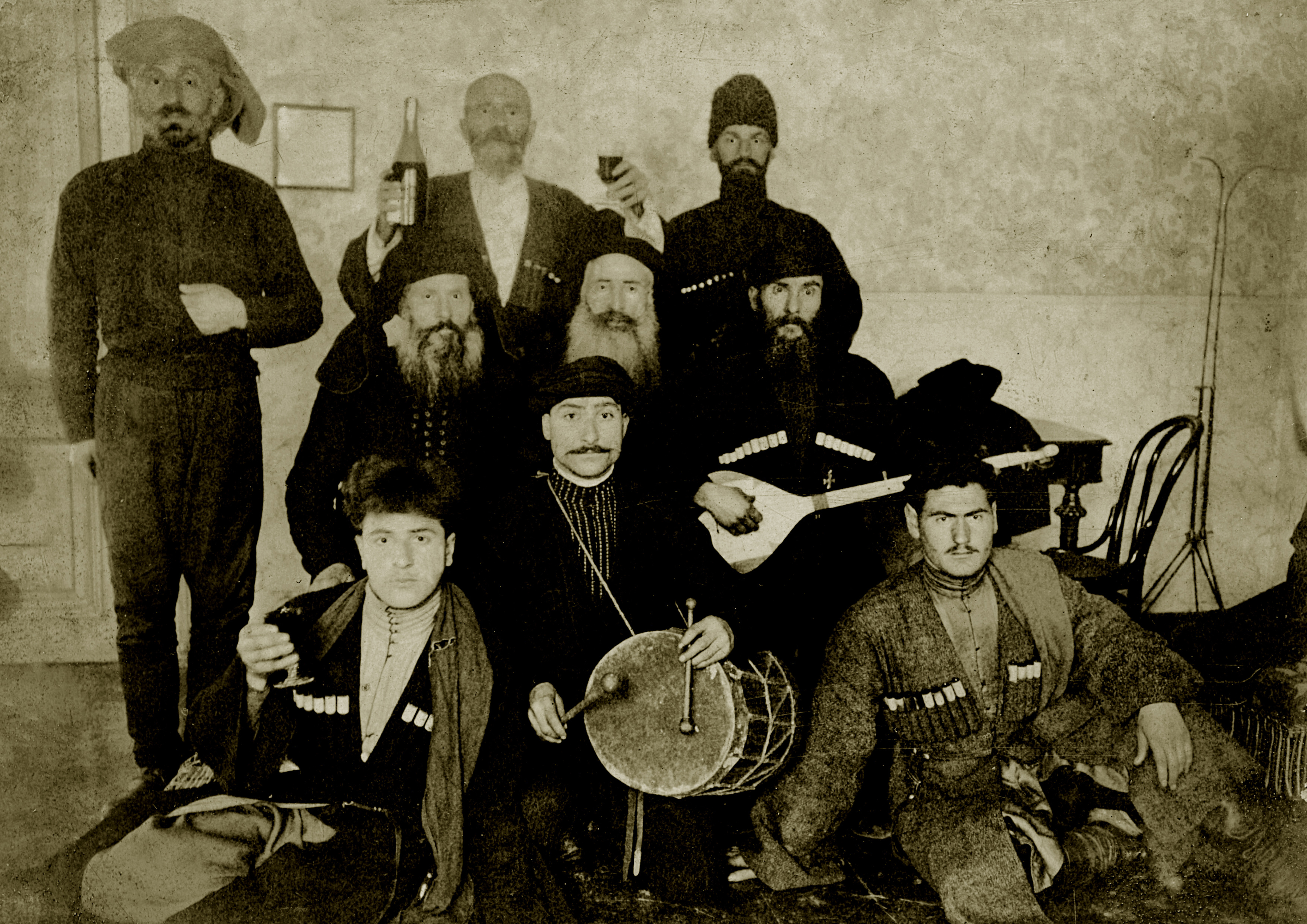The first sound recordings in Georgia
The invention of the sound recording device was an event of revolutionary importance in the 19th centure world. Initially, recordings were made on Edison's phonograph, which was then quickly improved upon. In 1894 Emil Berliner opened the first commercial gramophone company, United States Gramophone Company in Washington D.C., which very soon began distributing its products all over the world. The recording device made its way to Georgia in 1901 thanks to the London-based Gramophone company, with the first "studio" in the Caucasus region immediately opening in Tbilisi on the first floor of the Orient Hotel, located at 9 Golovini Street (today's Rustaveli Ave., near the Georgian Museum of Fine Arts).
Recordings began taking place in Tbilisi in 1901, initially mainly for commercial purposes. The records were then played on the gramophone on location and used for advertising.
The Gramophone company recorded many individual singers and groups, but sadly, we do not have photos that capture these artists in the moments of recording. The rare exception is the photo of Gigo Erkomaishvili's choir, which came to Tbilisi in 1907 to record songs on the gramophone.
Masiko Salukvadze brought Gigo’s ensemble from Guria and provided financial support for the trip. The singers who came to Tbilisi not only recorded songs, but also took an interesting photo in the process of work, thus preserving the names of the choir members forever.
The incomparable singers of Gurian songs featured on the photo are:
Seated in the front row, from left to right: Artem Erkomaishvili (1887-1967), Ermile Molarishvili (1860-1950), Luka Toidze (1883-1961).
Seated in the second row, from left to right: Giorgi Babilodze (1835-1931), Gigo Erkomaishvili (1840-1947), Giorgi Iobishvili (1849-1933).
In the third row, standing, from left to right: Naniko Burdzgla (1855-1922), Ivliane Kechakmadze (1845-1947), Masiko Salukvadze.
The songs performed by the Gurian choir were recorded by the German sound engineer Max Hampe in January 1907. These records were scattered over time: some of them ended up in the singers' families, others — in personal collections, and some — in the archives of the National Library. Later, while working on the multi-part feature film Shvidkatsa, the director Soso Chkhaidze became interested in the old recordings, which were to be used in the film.
Most of the materials in Georgia was kept in families. Naturally, time left its mark on these records, and the recordings were of poor quality and at low volume. Hoping that they would be able to find and digitize the original records recorded by "Gramophone" in Moscow, the director asked his friend, the musician Anzor Erkomaishvili for help. This is where the path of finding audio recordings of old Georgian folk songs begins, which Anzor Erkomaishvili went on to continue in St. Petersburg and London. He made a great contribution to gathering and improving these materials.
But, let us go back to 1907...
Gigo Erkomaishvili's ensemble recorded 44 songs in Tbilisi. Nowadays, we only have access to 32 of the samples, and the discussion regarding the remaining "unknown" recordings. Hopefully, they will soon return to Georgia and once again surprise the lovers of Georgian folk songs.
Finally, the contribution that the British made to the recording and preservation of Georgian and not only Georgian musical folklore is also worth mentioning.
If it weren't for the British and the Gramophone company, we would not have the records of the landmark period of our history, the legendary singers, their singing style and manner. The recordings from the years 1901-1914 are a treasure and a unique learning tool that still attracts the constant attention of practitioners and theorists.
We offer the records of Gigo Erkomaishvili's team that we have for today. It is interesting that almost all songs begin and end with calls, such as: "Giorgi Iobishvili! Sing the "Maqruli,” brother, sing it!” One of the choir members, Ivliane Kechakmadze, was the one who performed these calls.
References:
- Erkomaishvili, Anzor, and Vakhtang Rodonaia. 2006. Kartuli khalkhuri simghera: p’irveli ponochanats’erebi, 1901-1914. [Georgian Folk Songs: the first phonorecords, 1901-1914.]
- https://www.recordingpioneers.com/RP_HAMPE2.html

%20%E1%83%A1%E1%83%90%E1%83%9C%E1%83%93%E1%83%A0%E1%83%9D%20%E1%83%9C%E1%83%90%E1%83%97%E1%83%90%E1%83%AB%E1%83%94%20-%20%E1%83%9E%E1%83%A0%E1%83%9D%E1%83%94%E1%83%A5%E1%83%A2%E1%83%98%E1%83%A1%20%E1%83%AE%E1%83%94%E1%83%9A%E1%83%9B%E1%83%AB%E1%83%A6%E1%83%95%E1%83%90%E1%83%9C%E1%83%94%E1%83%9A%E1%83%98%2C%20%E1%83%A1%E1%83%90%E1%83%A0%E1%83%94%E1%83%93%E1%83%90%E1%83%A5%E1%83%AA%E1%83%98%E1%83%9D%20%E1%83%A1%E1%83%90%E1%83%91%E1%83%AD%E1%83%9D%E1%83%A1%20%E1%83%AC%E1%83%94%E1%83%95%E1%83%A0%E1%83%98-min.jpg)


.jpg)